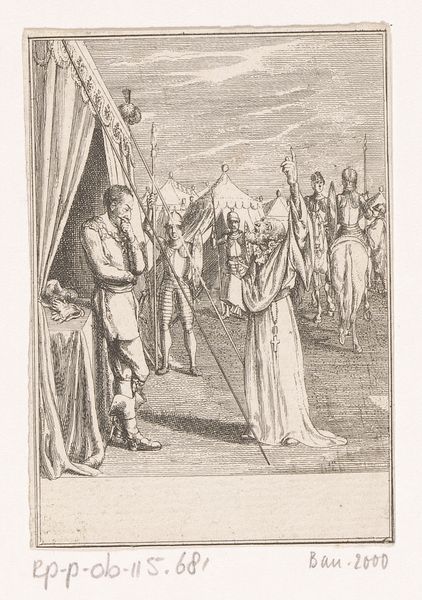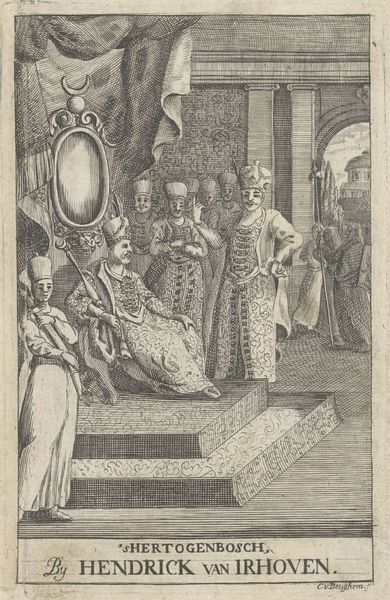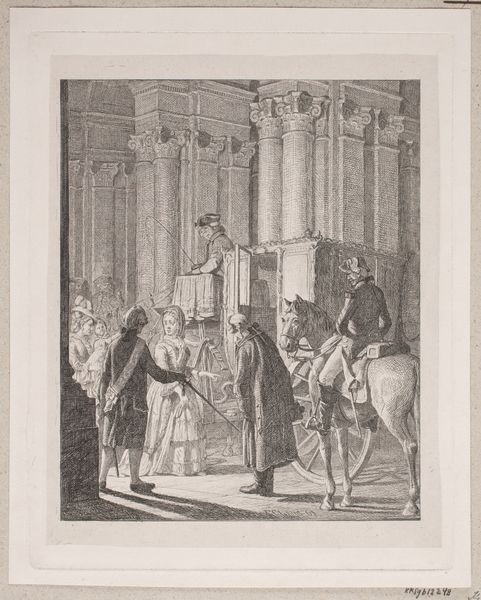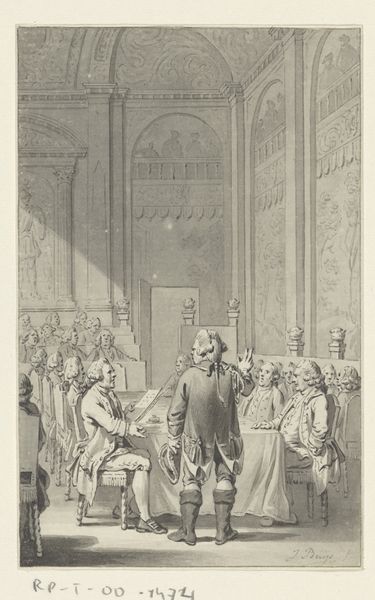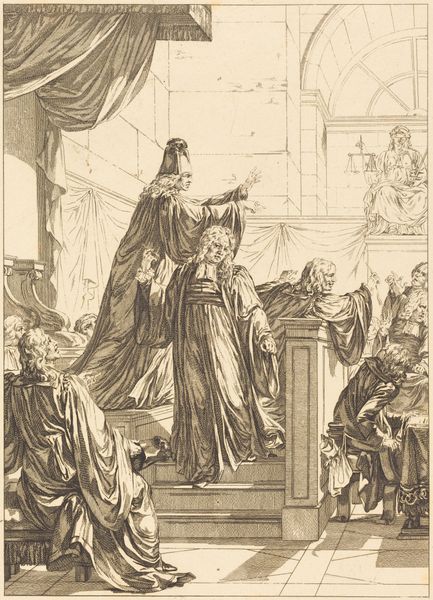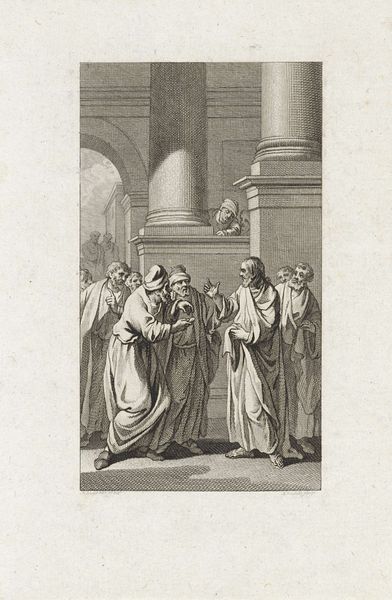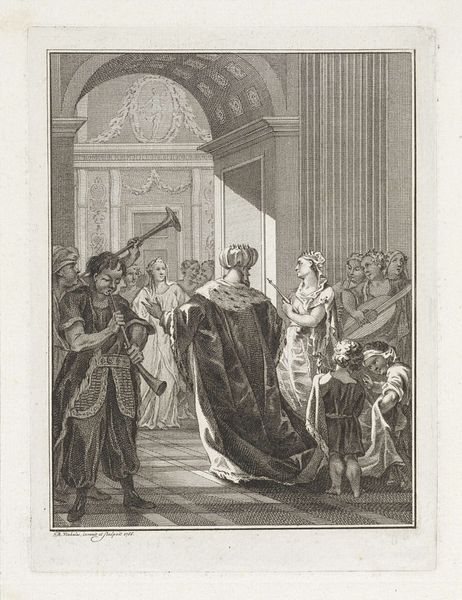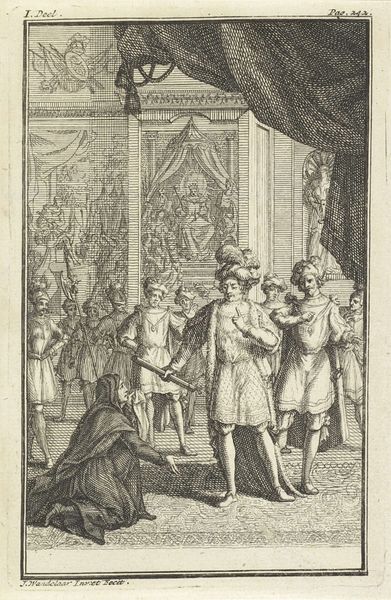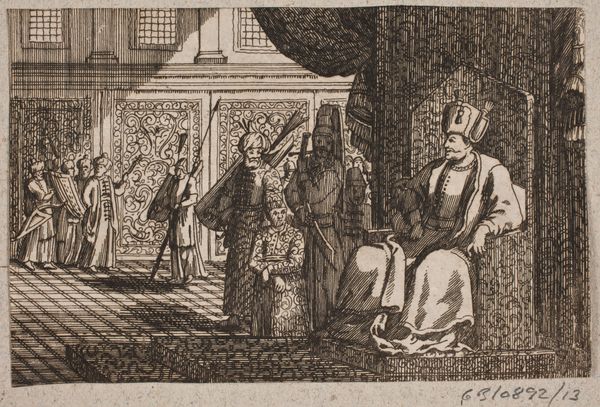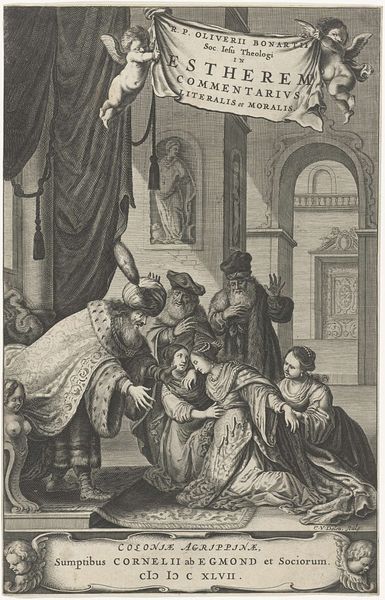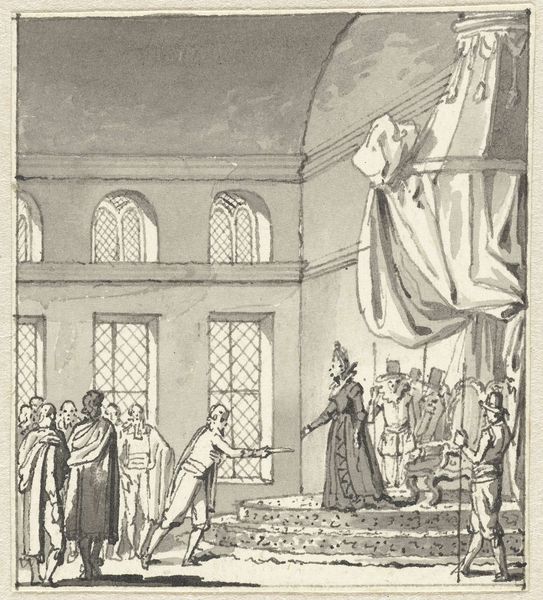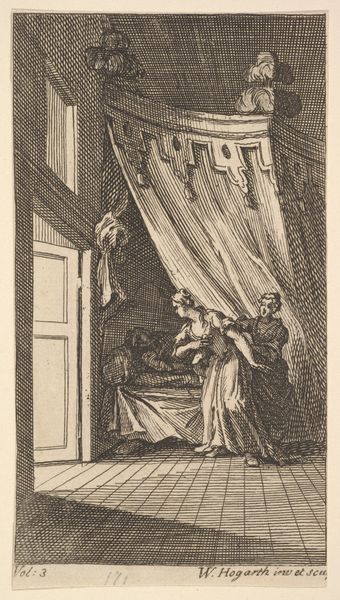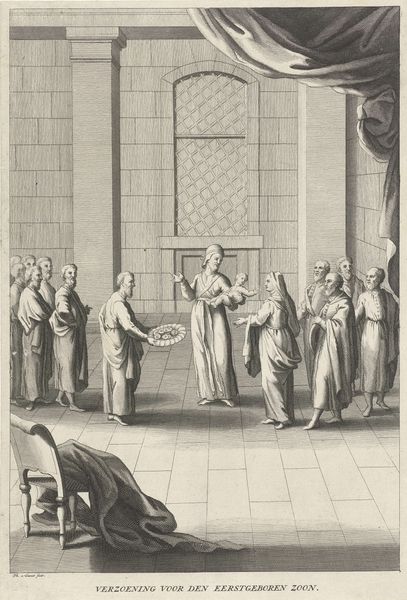
Sultan Ahmed III Crowned in the Mosque at Eyups (Aubry de La Mottraye's "Travels throughout Europe, Asia and into Part of Africa...," London, 1724, vol. I, pl. 17B) 1723 - 1724
0:00
0:00
drawing, print, engraving
#
drawing
#
baroque
# print
#
history-painting
#
engraving
Dimensions: plate: 9 5/8 x 6 7/8 in. (24.5 x 17.4 cm)
Copyright: Public Domain
Editor: This is "Sultan Ahmed III Crowned in the Mosque at Eyups," an engraving by William Hogarth from around 1724. It looks like a scene of great importance, probably ceremonial. Everyone seems to be in awe of the Sultan, bending over in deference. What symbols stand out to you in this piece? Curator: Immediately, I’m drawn to the opulent textures achieved through Hogarth’s engraving. The weight of the fabric draped overhead and the varied costumes indicate a society steeped in ritual and hierarchy. Think about the turban, the symbol of status, wisdom, and religious authority, each fold and size hinting at the individual's role. How does Hogarth depict power not just through the central figure but through the collective posture of the group? Editor: I see what you mean. Their bowed heads really amplify the Sultan’s stature. It’s interesting how Hogarth, a Western artist, portrays this Eastern ceremony. Curator: Exactly. Consider the European fascination with the "Orient" during this period. The engraving, originally intended as a travel illustration, also carries its own set of symbolic baggage, revealing both curiosity and perhaps a subtle sense of cultural superiority inherent in the Western gaze. Editor: So the piece functions as more than just a historical record? Curator: Precisely. It’s a mirror reflecting not only the event itself but also the attitudes and perceptions of the artist and his intended audience. It encourages us to investigate cultural interactions as a dialogue—visual representation in one culture reflecting a perceived imagery of the other, frozen in time. Editor: I hadn't thought about it that way. It’s like Hogarth isn’t just showing us a scene, he’s also showing us how Europe *saw* the Ottoman Empire. That adds a whole layer of meaning. Curator: Indeed. And that’s the enduring power of symbolic imagery - it speaks volumes about both the subject and the observer.
Comments
No comments
Be the first to comment and join the conversation on the ultimate creative platform.
